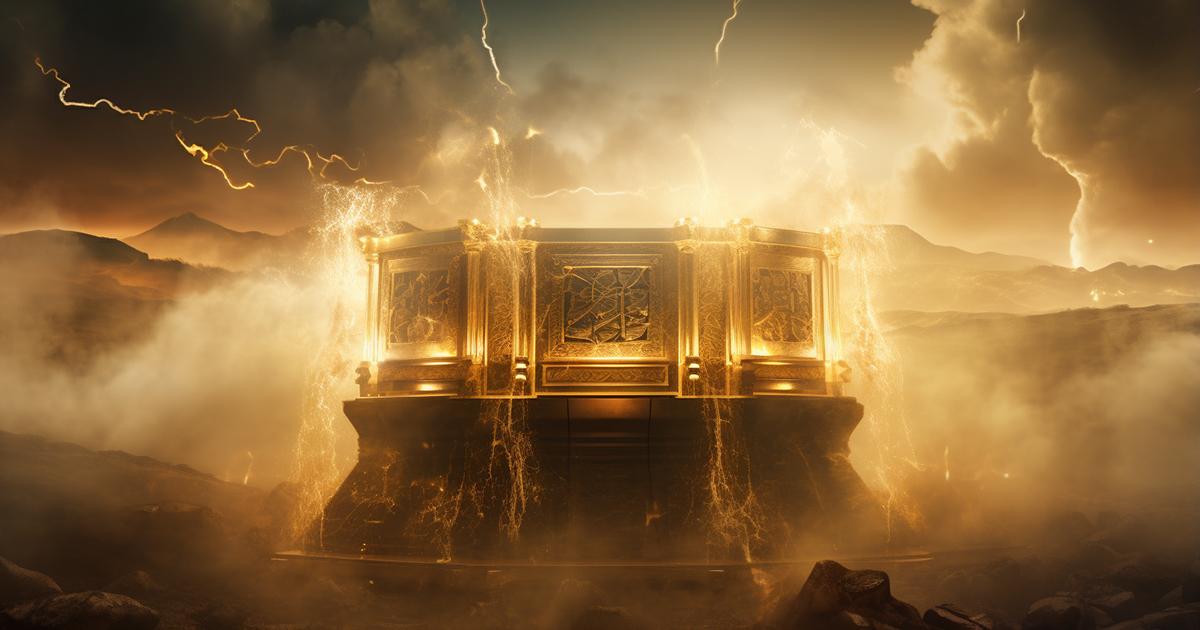Immersing ourselves in the mystique surrounding the Ark of the Covenant, an object of profound importance in the Hebrew Scriptures, captivates the minds of scholars and enthusiasts. Without delving into its portrayal in a particular popular TV series, our aim here is to reveal the intriguing enigmas orbiting this ancient relic. From the biblical narratives to the perplexing hypotheses put forth by ancient astronaut proponents, the history of the Ark weaves a cryptic narrative worthy of exploration.
The Ark, a revered container safeguarding the tablets containing the Ten Commandments, was entrusted to the Israelite priests. The designated high priest, Aaron, the brother of Moses, bore the colossal responsibility of its safekeeping. The attire described in the Bible for these priests held a significance beyond mere aesthetics; it functioned as a form of protective gear.
The high priest, especially, had to attire himself in a robe, breastplate, miter, and an unusual element – a rope tied around his leg. This seemingly odd rope served a practical purpose: in case an unfortunate incident occurred during their interaction with the Ark, and the priest met an untimely fate, retrieval of the body was forbidden due to the perceived dire consequences.

Majestically seated atop the Ark were two angelic figures, symbolizing the sacred space where it was believed God’s presence dwelled – a celestial juncture where the divine and earthly realms merged.
This space, known as the mercy seat, was purportedly where God communicated with the Levite priests. But did this presence truly signify the divine, or did it conceal an entirely different nature?
Step into the domain of ancient astronaut theorists, who present a fascinating conjecture regarding the Ark’s potential power. They propose that it could have served as an electrical capacitor, a device capable of storing and transmitting energy.
The historical narratives linked to the Ark have only fueled their speculations. Tales of sparks and flames emanating from the Ark, leading to instantaneous death upon contact, or assertions of its ability to devastate cities, bolster the belief that the Ark might have functioned as a massive energy storage unit.
To grasp this notion, it becomes imperative to comprehend the workings of capacitors. They involve two conductors separated by an insulator. In the case of the Ark, the external gold layer acted as a conductor, while the interior gold-coated wall served as the second conductor.
The wood sandwiched in between operated as the insulator. Positive and negative charges were induced on these conductors through the cherubim. One cherub, affixed to the outer side, bore a positive charge, while the other, linked to the inner side via a rod, carried a negative charge.
When the Israelites claimed to witness the presence of God between the cherubim, it sparks a tantalizing query: Were they observing a divine manifestation, or was this “image of God” a consequence of the electrical phenomena within the Ark?
The biblical depictions of God often involve smoke, fire, dazzling lights, and crackling sounds – elements that resonate with what one would expect from electric discharges. Could it be that the visions of the Israelites were manifestations of this electric energy?
Featured Video:
The Ark of the Covenant remains a subject of intrigue, with its mysteries enduring across time. While the age-old debate between the sacred and the scientific may never find a definitive conclusion, the enigmatic powers attributed to this ancient relic render it a captivating artifact that beckons us to push the boundaries between faith and logic, ancient convictions and contemporary interpretations.
